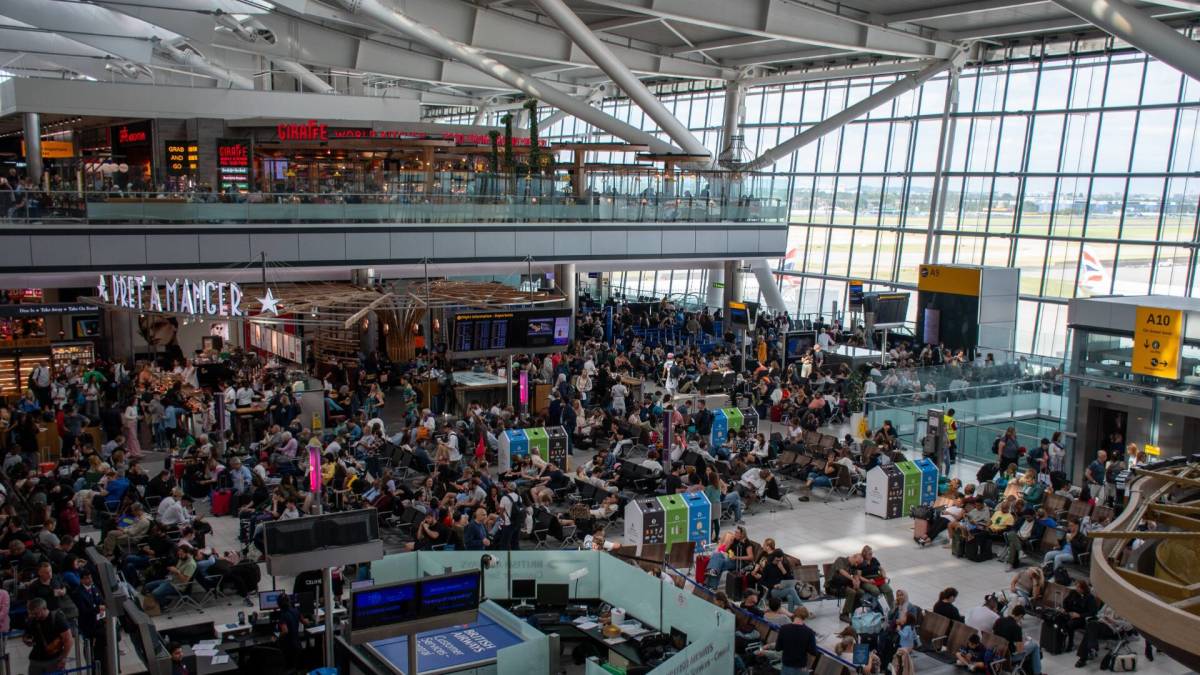
After a record 2024 for air travel, which saw total full-year traffic surpass pre-pandemic levels, 2025 was widely-expected to carry the mantle and deliver another record-setter for the airline industry. Instead, its been a little more turbulent than expected.
After a strong start to the year, travelers paled back their travel plans in the second quarter, likely due to tariff talk jitters and waning consumer confidence in the U.S. economy. The number of travelers transiting U.S. airports fell by about 1% year-over-year in Q2.
That might be hardly noticeable when you queue up in the security line at the airport, but that amounts to about 22,167 fewer travelers on an average day, per data from the Transportation Security Administration. And if you’re betting on a record year for aviation, that’s generally not the direction you’d want to see travel trends going.
Even more so if you’re an American airline. After initially pulling their forecasts for the second quarter in response to economic uncertainty, many U.S. airlines delivered strong quarterly showings during earnings season. And now, with the seasonally-strong third quarter in the rear view, there’s hopes for a repeat.
However, many of these airlines are still priced at modest valuations, with the economic situation clearly still casting a haze over aviation demand.
There is some good news for most domestic players, though: reluctant consumers seem to be trickling back into airports. Per TSA data, the number of travelers going through U.S. security checkpoints bounced back in the third quarter. In fact, year-over-year, there were about 26,878 more travelers were counted going through TSA on an average day than in 2024, a 1.05% difference.
The rebound shows that some travelers might have put off travel plans in light of economic chatter. That case is even more clear when you zoom out and look at the year-to-date trend: there’s only about 5,700 more people transiting security on an average day than in 2024.
However, more travelers by itself isn’t a winning formula alone for most domestic airlines. While data from the Bureau of Labor Statistics (BLS) showed a 3.3% jump in airfares year-over-year in August, credit card spending on airfares was shown to have declined on Bank of America credit cards by 4% and 5% year-over-year in recent weekly data.
A possible consolation for airlines is that oil prices are declining, which is helping airlines reduce their spending on the “single biggest cost,” per IATA’s Willie Walsh. Lower oil prices could afford airlines greater flexibility on fares, deals, and other spending.
However, those lower prices are not being felt universally, especially for airlines with a greater concentration of routes on the west coast. Alaska Air Group (ALK) , the parent company of Alaska Airlines and Hawaiian Airlines, warned investors recently that higher fuel costs played a significant role in derailing their third quarter performance.
Related: This U.S. airline warns fuel costs, weather, and a tech outage derailed their quarterly performance
That might be evidence enough that the recovery in this quarter was not distributed evenly, particularly as ultra-low cost carrier Spirit filed for bankruptcy again and Southwest (LUV) saying in July that its annual pre-tax profit took a $1 billion haircut, blaming the economy.
As a result, investors will likely be clinging for clues in reports from industry-leaders like Delta (DAL) , which will tee off earnings season on Oct. 9, likely serving as a bellwether for the industry. And perhaps, by extension, discretionary and business spending, too. Close competitor United Airlines (UAL) will follow on Oct. 15, offering another perspective.
#Air #Travel #Rebounded #Quarter #Bump #Big #Airline #Earnings